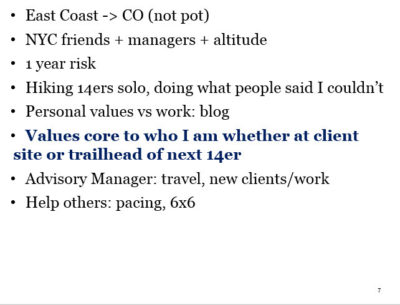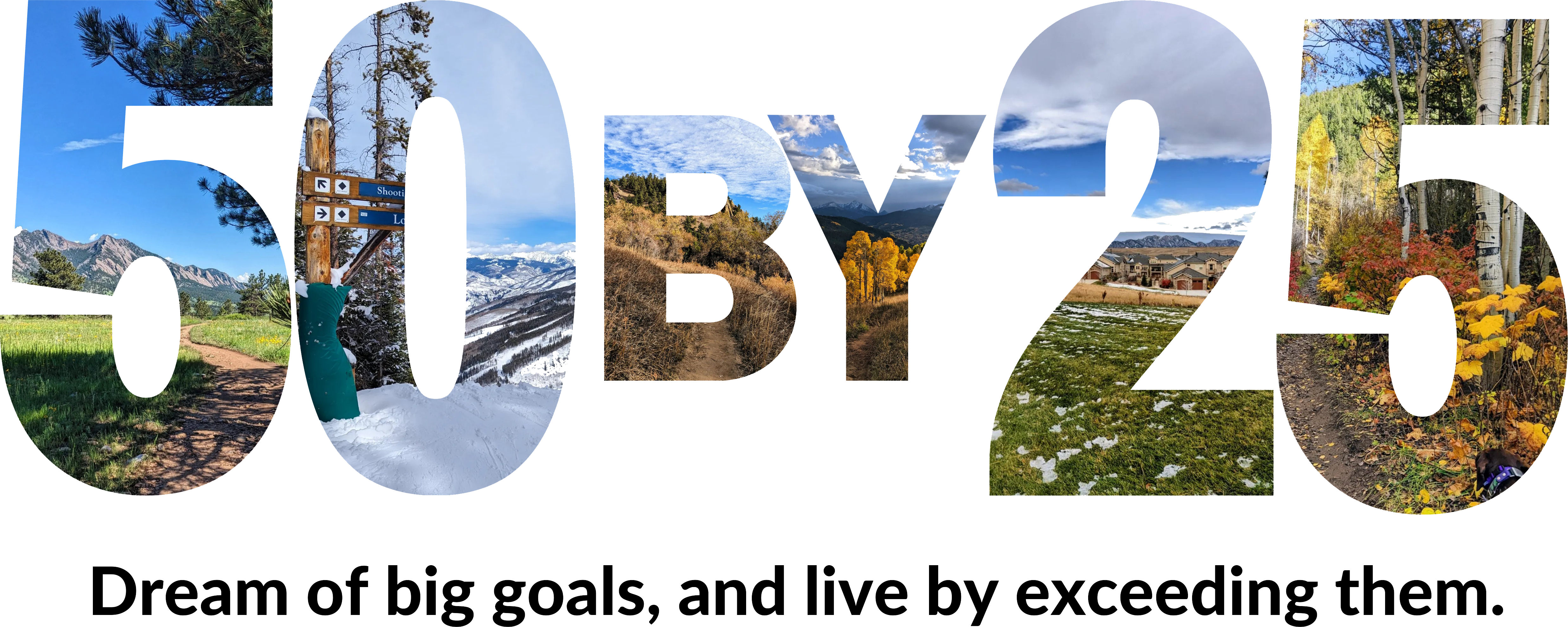I mentioned two weeks ago that I was in California to facilitate my company’s Discover program. (Here’s a post on one of the things I started pondering after this time around: how much work is too much work?) The entire event is videotaped, and last time I facilitated, I promised several friends/family who were asking that I’d share the videos. But then I got them back, and I was too embarrassed to post them. Have you ever tried to watch a recording of yourself on video? It’s uncomfortable, seeing all the things you wish you could change but having no power to do it differently at that point!

This time around, I told myself that as long as I felt at the end of the week that I had done a reasonably good job, I’d share the video. But when I finished, I wasn’t sure quite how I had done. The time onstage flew by, and I felt like I could barely remember it! I got great feedback from the learning & development team as well as the coaches who attend every session, though, so I decided that I’ll be brave and post it before I watch it myself and cringe and change my mind 🙂 Here goes…
I watched the beginning and end in order to cut the video down to just my opening portion of the morning section (which is a full 90 minutes, featuring another presenter and then me again for some logistical details). Already, I see a difference between this and my videos from last year’s sessions. I didn’t look nervous then, per se, but I look a lot more casual and comfortable this year. For anyone interested in “the making of this talk”, here’s why.
A week before heading out to Discover, I read TED Talks: The Official TED Guide to Public Speaking. I’m so glad I did! I think doing so helped me tweak my talk in a lot of subtle ways that contributed to a great end result. My talk was already planned, yes, but after reading the book, I adjusted the way I said certain things, and added a few lines that ended up making a big difference in keeping the audience’s attention.
TED Talks suggests opening with something intriguing, that connects your story with the broader picture. Last year, I had opened my “who am I” story with the line, “I’d like to tell you about an adventure I went on that didn’t quite play out the way I thought.” This year, I added to that, “…and in fact, changed my entire perspective on life.” I hoped that might better intrigue listeners right from the beginning.
A note about “lines” and wording. TED Talks devotes a lot of time to discussing whether to memorize your talk word-for-word or make it up as you go along (noting that the latter type of talks are anything but off-the-cuff, and often require more preparation than memorization). I found that section of the book fascinating, as it was a debate that I had last year with the learning & development manager who was tasked with prepping me to speak. The style I ended up using was kind of a hybrid of the two.
To explain that hybrid model: there were a few “lines” that I said to myself so many times that I knew they would come out exactly the same way every time. But most of my content was ad libbed based on some “guidepost” notes that I had on the screens at the foot of the stage. In the video, you can see me looking down at the notes from time to time, especially in the sections that were written by the learning & development team rather than being “my story.” Having those words to anchor me helped me to make sure that I was staying on track and in order (particularly important since I had an A/V team changing the images behind me, which were pre-arranged to go with the content), and also helped me remember some content that I was asked to say word-for-word.

One of the best tips I got from TED Talks was the idea of creating a throughline. If you had to describe your talk in one sentence, what would be the message you want someone to take away? Everything in your talk should contribute to that throughline, and it’s important to ruthlessly cut extraneous details/stories that don’t belong. The stories I wanted to tell all centered around the idea of doing something I thought I couldn’t do, so I decided to tweak my story and ensure that would be my throughline. To connect with that throughline, I added a short bit around Carol Dweck’s research on mindset, and I feel like it really helped to make my story more cohesive. Plus, I am really passionate about Dweck’s research, so I was excited to get to tell other people about it! (Here’s a link to Dweck’s book, Mindset.)
To further cement my throughline, I also specifically memorized and used the line, “What could your life be like if you believed nothing was impossible?” Rather than it being scripted, I think it ended up being a powerful part of my talk. A few days later, one of the coaches came up to me to compliment me on my talk, and told me that she liked that particular line line so much that she wrote it down and discussed it with her coaching group. What a compliment!
So, after all of this… I still haven’t watched the video myself, and I hope I’m not setting this talk up to be much better than it actually was! But for me, the true test of whether I did a good job at Discover is how many of our senior associates come up to me over the course of the week to introduce themselves and talk about their stories and goals. This year, I had more people come up to me than ever before, and I’ve also had several seniors email me since – so I consider my connection with the audience to be a huge success 🙂 I’m really looking forward to setting some goals for 2017 that involve connecting more with people in my firm, as the Discover program has allowed me to do.

That was very informative as to how you constructed the talk and the tools you used in its execution. I find the “throughline” approach something that can most definitely be applied with equal success to explanatory writing…cutting out extraneous detail that doesn’t advance a theme is definitely a pitfall we often fail to make. Also, I DID watch the video in its entirety, and it was very cohesive and well delivered to achieve what appears to have been your well-received result! CONGRATS, Laura! 🙂
I’m so glad you liked both the video and the post! Now I need to make the time to watch the video myself. Maybe with a glass of wine in hand 😉
I love you but did not watch the whole video 🙂 The part I did watch was great, though! you look very natural/comfortable
Haha no worries; I haven’t had the time to watch the whole thing myself yet! Thanks 🙂
Loved this! Thank you so much for being vulnerable and sharing it!
Thank YOU for the kind words, Sara!